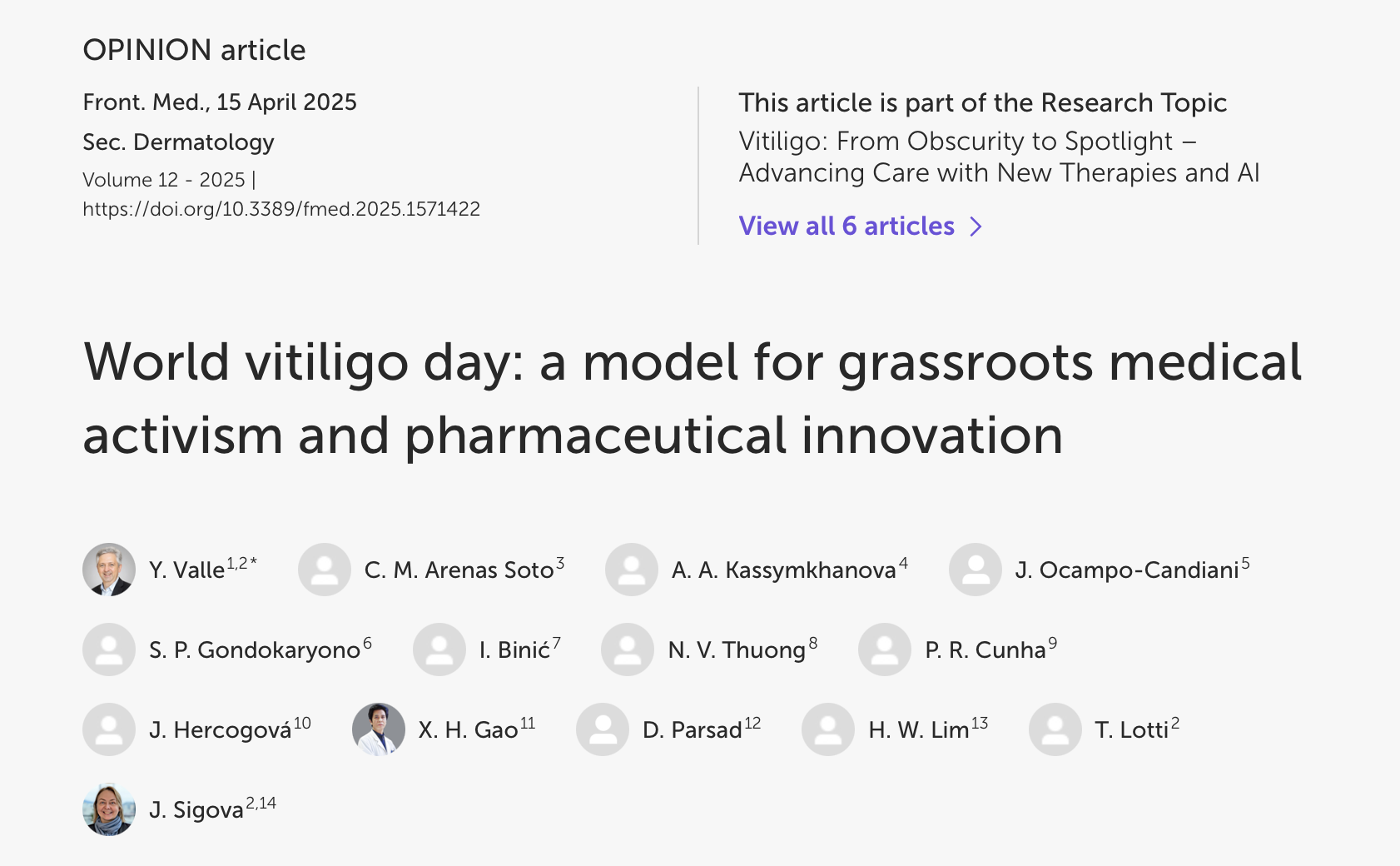New
The Story of World Vitiligo Day—Now in Print (and in Proper Order)
Today marks a small but meaningful milestone in the journey of World Vitiligo Day.
Our paper, World Vitiligo Day: A Model for Grassroots Medical Activism and Pharmaceutical Innovation, has just been published in Frontiers in Medicine. You can read it here—and we hope you do.
This isn’t just another academic article. It’s the first time the story of World Vitiligo Day has been told with the clarity, detail, and nuance it deserves. Authored collectively by all WVD honorary presidents, this piece brings together the voices of those who were there from the start, those who built the movement step by step, and those who continue to shape its global impact today.
Let’s be honest: over the years, a few alternative “recollections” have floated around—some incomplete, others politely imaginative. But facts matter, especially when it comes to the origin and evolution of a global health campaign that touches millions of lives. This paper sets the record straight.
It captures not only the grassroots energy and emotional drive behind WVD but also the way it evolved into a force for change—one that has influenced public health policies, encouraged pharma innovation, and connected communities across continents. It’s a story of passion, persistence, and yes, a few logistical headaches along the way (every good story has them).
👉 For those who want the short version: this is the official version from now on.
For those who want the full behind-the-scenes tour—complete with historical timelines, key milestones, and lessons learned—we invite you to dive into the entire History of the World Vitiligo Day on our webiste.
A heartfelt thanks to the many unsung heroes behind World Vitiligo Day—advocates, clinicians, researchers, and partner groups like GVF, VITFriends, VIPOC, VITSAF, the Vitiligo Society, and SHWETA — whose work has shaped policy and perception alike, and to Incyte, a steadfast supporter and sponsor since 2019, for their continued partnership in raising awareness and advancing care.
FAQOther Questions
- Can Ginkgo Biloba help with vitiligo?
Ginkgo Biloba offers a promising, simple, and relatively affordable option for managing vitiligo. Known for its anti-inflammatory, immunomodulatory, and antioxidant properties, ...
- How long does it take to treat vitiligo?
Vitiligo, a condition characterized by the loss of skin pigment, can be unpredictable in both progression and treatment. The time it takes to treat vitiligo varies significantly...
- Does halo nevi affect vitiligo development?
Halo nevi (also known as Sutton's nevi) are characterized by a mole that's surrounded by a ring of depigmented or lighter skin. While both halo nevi and vitiligo involve the des...
Though it is not always easy to treat vitiligo, there is much to be gained by clearly understanding the diagnosis, the future implications, treatment options and their outcomes.
Many people deal with vitiligo while remaining in the public eye, maintaining a positive outlook, and having a successful career.
Copyright (C) Bodolóczki JúliaBy taking a little time to fill in the anonymous questionnaire, you can help researchers better understand and fight vitiligo.

